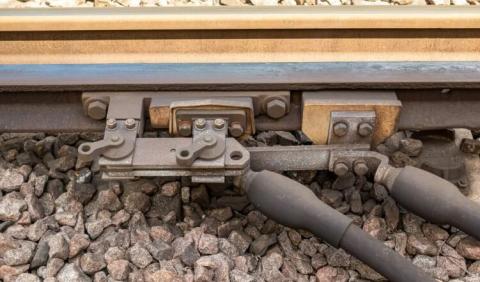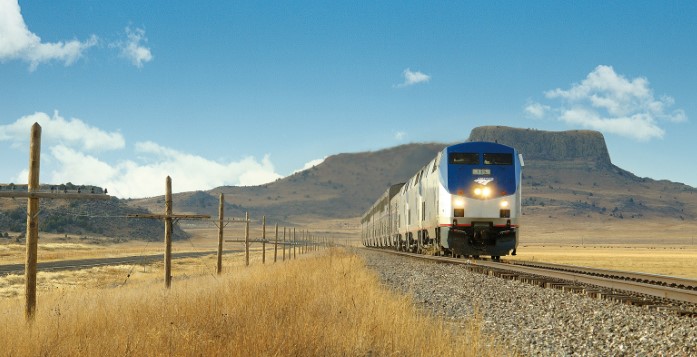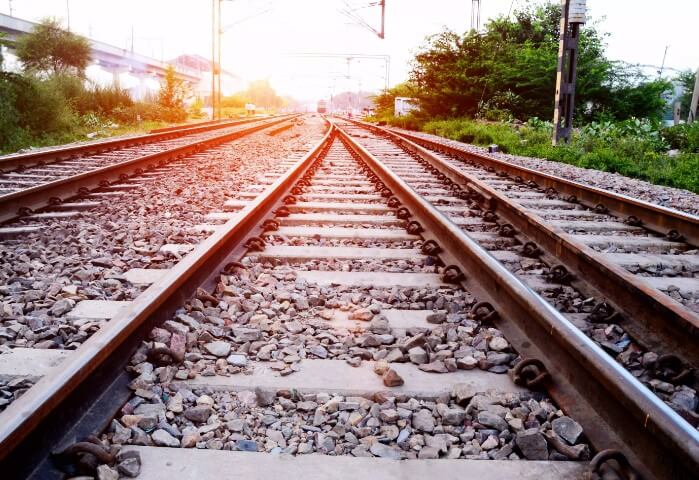
The rail industry, one of the oldest modes of transportation, has undergone significant transformations over the past century. From steam engines to high-speed trains, the evolution of rail transport is a testament to human ingenuity and technological advancement. Today, we stand at the precipice of a new era, where technology is not just enhancing rail systems but fundamentally reshaping them. The future of rail promises to be faster, safer, more efficient, and environmentally friendly, driven by advancements in automation, communication systems, and sustainable energy. In this blog post, we explore how technology is driving the future of rail, transforming the industry, and what we can expect in the years to come.
1. The Evolution of Rail Technology
The rail industry has always been at the forefront of technological innovation. The introduction of the steam engine in the early 19th century revolutionized transportation, making long-distance travel and freight transport more feasible than ever before. As electricity became widespread, electric trains replaced steam engines, offering faster, more reliable services. The 20th century saw the advent of diesel locomotives, high-speed trains, and advanced signaling systems, each bringing about a significant leap in rail technology.
Today, the industry is experiencing another wave of innovation, with digitalization, automation, and sustainability at its core. These advancements are not just incremental improvements but are driving a paradigm shift in how rail systems operate and serve society.
2. Automation: The Backbone of the Future of Rail
One of the most significant technological drivers of the future of rail is automation. Automated systems are being integrated into various aspects of rail operations, from train control and signaling to maintenance and passenger services.
Automated Train Operations (ATO): Automated Train Operations (ATO) systems are transforming how trains are driven. These systems allow trains to operate without direct human intervention, optimizing speed, braking, and scheduling. ATO systems can reduce energy consumption by optimizing acceleration and braking patterns, reduce wear and tear on tracks, and enhance overall safety. The London Underground and several other metro systems worldwide already use ATO, and the technology is gradually being introduced to mainline rail networks.
Predictive Maintenance: Another critical area where automation is making a significant impact is in predictive maintenance. Traditional maintenance schedules are based on time intervals or the mileage covered by trains. However, with predictive maintenance, sensors and data analytics are used to monitor the condition of various components in real time. This allows for maintenance to be carried out only when necessary, reducing downtime and preventing failures before they occur. Predictive maintenance not only improves the reliability of rail services but also extends the lifespan of infrastructure and rolling stock.
Autonomous Trains: While fully autonomous trains are still in the experimental stages, they represent the pinnacle of automation in the rail industry. Autonomous trains, controlled by advanced algorithms and artificial intelligence (AI), could operate with minimal human oversight, leading to significant cost savings, increased efficiency, and enhanced safety. Countries like Germany, China, and Japan are at the forefront of developing and testing autonomous trains, which could be a common sight on rail networks in the coming decades.
3. Advanced Communication Systems: Enhancing Safety and Efficiency
Communication systems are the lifeblood of modern rail networks, ensuring that trains run safely and on time. The future of rail will be shaped by advancements in communication technologies that enable better coordination, real-time monitoring, and faster response times.
Positive Train Control (PTC): Positive Train Control (PTC) is an advanced safety system designed to prevent train collisions, derailments, and other accidents. PTC systems use a combination of GPS, wireless communication, and onboard computers to monitor a train's speed and location, automatically applying brakes if necessary. In the United States, the implementation of PTC has been a significant focus following several high-profile rail accidents. As this technology continues to evolve, it will play a crucial role in enhancing the safety of rail operations globally.
Leaky Feeder Systems: Leaky Feeder Systems are a type of communication technology used primarily in underground and tunnel environments. These systems consist of a cable that acts as an antenna, allowing radio signals to be transmitted over long distances. Leaky Feeder Systems are essential for maintaining communication with trains and workers in areas where traditional communication methods are ineffective. As rail networks expand and more tunnels are constructed, the importance of reliable communication systems like Leaky Feeder will only grow.
5G and Beyond: The rollout of 5G networks is set to revolutionize rail communication. With its high-speed, low-latency capabilities, 5G will enable real-time data transmission between trains, control centers, and passengers. This will lead to more accurate scheduling, better traffic management, and improved passenger information systems. In the future, as communication technology continues to advance, we may see the integration of even faster networks, further enhancing the efficiency and safety of rail operations.

GET IN TOUCH
The ultimate solution for reliable power control! call us at 276-285-3841
4. Sustainable Energy Solutions: Powering the Future of Rail
As the world grapples with the challenges of climate change, the rail industry is under pressure to reduce its carbon footprint. Fortunately, technology is paving the way for more sustainable energy solutions that will drive the future of rail.
Electrification: One of the most effective ways to reduce the environmental impact of rail transport is through electrification. Electric trains produce significantly lower greenhouse gas emissions compared to diesel-powered trains. Many countries are investing heavily in electrifying their rail networks, with the goal of phasing out diesel locomotives altogether. In addition to being more environmentally friendly, electric trains are also quieter and require less maintenance, making them a more cost-effective option in the long run.
Hydrogen-Powered Trains: Hydrogen fuel cells are emerging as a promising alternative to traditional diesel engines, especially on non-electrified rail lines. Hydrogen-powered trains, like the ones developed by Alstom in Germany, produce zero emissions, with water being the only byproduct. These trains are particularly well-suited for regional and rural lines where electrification may not be feasible. As the technology matures and the production of green hydrogen becomes more widespread, hydrogen-powered trains could play a significant role in the future of rail.
Battery-Powered Trains: Another innovative solution for sustainable rail transport is battery-powered trains. These trains are equipped with high-capacity batteries that can be charged either at stations or through regenerative braking. Battery-powered trains are ideal for short to medium distances and can be used on lines that are only partially electrified. With advances in battery technology, such as increased energy density and faster charging times, battery-powered trains are expected to become more common in the future of rail.
5. High-Speed Rail: Connecting the World Faster
High-speed rail (HSR) is a symbol of technological progress in the rail industry. Capable of reaching speeds of over 200 mph, high-speed trains are transforming how people travel, making long-distance journeys faster and more convenient.
Maglev Trains: One of the most exciting developments in high-speed rail technology is the magnetic levitation (Maglev) train. Maglev trains use powerful magnets to lift and propel the train, eliminating friction and allowing for incredibly high speeds. The Shanghai Maglev, currently the fastest commercial train in the world, can reach speeds of 267 mph. While expensive to build, Maglev trains represent the future of rail travel, offering a glimpse of how we might travel between cities and even countries in the coming decades.
Hyperloop: Hyperloop technology, first proposed by Elon Musk, is another potential game-changer for the future of rail. The Hyperloop concept involves passenger pods traveling through low-pressure tubes at speeds of up to 760 mph. While still in the experimental stage, several companies are working on developing Hyperloop systems, which could revolutionize long-distance travel by significantly reducing travel times. If successful, Hyperloop could represent a new frontier in the future of rail, offering an alternative to both traditional trains and air travel.
6. Digitalization: The Future of Rail Operations
Digitalization is transforming every aspect of the rail industry, from how trains are operated to how passengers interact with the rail system. The integration of digital technologies is driving efficiency, enhancing safety, and improving the overall passenger experience.
Smart Ticketing: The future of rail travel will likely see the widespread adoption of smart ticketing systems. These systems allow passengers to purchase and use tickets via smartphones or contactless cards, eliminating the need for paper tickets. Smart ticketing not only streamlines the boarding process but also provides valuable data on passenger flows, helping rail operators optimize schedules and reduce congestion.
Real-Time Passenger Information: Digitalization is also improving the quality of information available to passengers. Real-time updates on train schedules, delays, and platform changes can be delivered directly to passengers' smartphones or displayed on digital screens at stations. This ensures that passengers are always informed and can make better decisions about their journeys. In the future, we can expect even more personalized information, such as suggestions for alternative routes based on real-time traffic conditions.
Digital Twins: One of the most innovative uses of digital technology in the rail industry is the concept of digital twins. A digital twin is a virtual model of a physical asset, such as a train or a section of track. By using data from sensors and other sources, digital twins can simulate the behavior of these assets in real time, allowing operators to monitor performance, predict failures, and optimize maintenance. Digital twins are already being used in various industries, and their application in the rail sector could revolutionize how rail networks are managed.
7. The Impact of AI and Big Data on Rail Operations
Artificial intelligence (AI) and big data are two of the most powerful tools driving the future of rail. These technologies enable rail operators to analyze vast amounts of data, make more informed decisions, and optimize every aspect of rail operations.
AI-Powered Traffic Management: Traffic management is one of the most critical aspects of rail operations. AI-powered systems can analyze data from multiple sources, such as train schedules, track conditions, and weather forecasts,
to optimize train movements and reduce delays. These systems can also predict potential conflicts and take corrective action in real-time, ensuring that trains run smoothly and on time.
Big Data Analytics: The rail industry generates vast amounts of data every day, from passenger numbers and ticket sales to train speeds and energy consumption. Big data analytics allows rail operators to make sense of this data, identifying trends and patterns that can be used to improve operations. For example, by analyzing data on passenger flows, operators can optimize train schedules, reduce overcrowding, and improve the overall passenger experience. In the future, big data analytics will play an even more significant role in the future of rail, enabling more personalized services and more efficient operations.
AI in Maintenance: AI is also transforming how rail systems are maintained. By analyzing data from sensors and digital twins, AI can predict when components are likely to fail and recommend maintenance before a problem occurs. This not only reduces downtime but also extends the lifespan of critical infrastructure and rolling stock. As AI technology continues to advance, its impact on rail maintenance will only grow, leading to safer and more reliable rail services.

GET IN TOUCH
The ultimate solution for reliable power control! call us at 276-285-3841
8. The Role of Cybersecurity in the Future of Rail
As rail systems become more digital and connected, the importance of cybersecurity cannot be overstated. The future of rail will depend on the ability to protect these systems from cyber threats, ensuring the safety and reliability of rail operations.
Protecting Critical Infrastructure: Rail networks are considered critical infrastructure, and any disruption can have severe consequences. Cybersecurity measures must be in place to protect rail systems from potential attacks, such as hacking, data breaches, and ransomware. This includes securing communication networks, protecting digital assets, and ensuring that all systems are regularly updated and tested for vulnerabilities.
AI-Driven Cybersecurity: AI can also play a crucial role in enhancing cybersecurity in the rail industry. AI-driven systems can monitor network traffic for unusual patterns, detect potential threats in real time, and respond to incidents faster than human operators. As cyber threats become more sophisticated, AI-driven cybersecurity will be essential in protecting the future of rail.
9. The Future of Passenger Experience
While much of the focus on the future of rail is on technology and infrastructure, it's important not to overlook the passenger experience. The future of rail travel will be defined by how well it meets the needs and expectations of passengers.
Personalized Services: As digitalization continues to advance, passengers can expect more personalized services tailored to their preferences. This could include customized travel itineraries, personalized recommendations for connections or activities at their destination, and even tailored in-transit entertainment options.
Sustainability and Comfort: Passengers are increasingly concerned about the environmental impact of their travel choices. The future of rail will likely see a greater emphasis on sustainability, with operators offering more eco-friendly options. This could include trains powered by renewable energy sources, more efficient waste management systems, and reduced use of single-use plastics. Additionally, as travel times decrease and distances increase, ensuring passenger comfort will be a priority, with innovations in seating, onboard amenities, and noise reduction.
Enhanced Connectivity: In an increasingly connected world, passengers expect to be able to stay online throughout their journey. The future of rail travel will likely see widespread availability of high-speed internet on trains, allowing passengers to work, stream content, or stay in touch with friends and family while on the move. Enhanced connectivity will also enable new services, such as real-time updates on travel conditions or the ability to order food and beverages directly from their seat.
Conclusion
The future of rail is being shaped by a convergence of advanced technologies, from automation and digitalization to sustainable energy and AI. These innovations are driving significant improvements in efficiency, safety, and passenger experience, ensuring that rail remains a vital part of the global transportation network for decades to come. As we look to the future, it's clear that the rail industry will continue to evolve, with technology serving as the catalyst for this transformation. Whether it's through the development of autonomous trains, the adoption of hydrogen and battery power, or the use of AI-driven systems, the future of rail promises to be one of the most exciting and dynamic periods in the industry's history.
Our Expert Services
Swartz Engineering provides top-quality products to meet our customers' needs. We also make sure our products work reliably and safely. Our products include:
- Type 76 DC Relay
- Type 82 DC Relay
- Swartz Engineering’s Type 64 Ground Relay
- Type 32 Reverse Current Relay
- Type 150 DC
- CSM Shield Monitor
- Metal Oxide Surge Arrestors
- Transducers
- MVIS SL Slim-line Contactor
- Fully-tested Power Control Rooms
- Swartz Engineering’s Portable Substations
